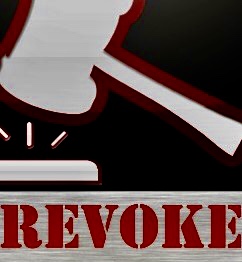
Fitzgerald v Hill 2022 BCSC 968 is one of many examples where disgruntled beneficiaries with hostility towards the executor failed in court to replace or remove an executor / trustee.
The court listed off the many things that the executor had performed in carrying out his duties and saw no endangerment to the estate assets so refused to remove an executor.
THE LAW
To replace or remove an executor under ss. 158 and 159 of Wills, Estates and Succession Act, S.B.C. 2009, c. 13 [WESA], and a trustee under s. 30 of the Trustee Act, R.S.B.C. 1996, c. 464. Both may also be removed and replaced under the inherent jurisdiction of the court.
If the court removes a personal representative under WESA, it must appoint another person who consents to act as a substitute personal representative, unless the administration of the Estate is complete or the court considers it unnecessary.
The guiding principles are well-established for the exercise of judicial discretion to remove an executor and trustee. As stated by Butler J., as he then was, in Levi-Bandel v. McKeen, 2011 BCSC 247:
[19] The test for removal of an executrix or trustee is not contentious. The leading authority in British Columbia remains the decision in Conroy v. Stokes, [1952] 4 D.L.R. 124 (B.C.C.A.). In Conroy, the Court of Appeal considered whether it was expedient to remove one trustee and appoint a replacement when some of the beneficiaries were dissatisfied with the way the trustee was handling the estate. The court confirmed at 126-127 that the main test for removal of a trustee is the welfare of the beneficiaries:
In Letterstedt v. Broers (1884), 9 App. Cas. 371, their Lordships of the Judicial Committee held that the main principle upon which the jurisdiction of Courts of Equity has been exercised to remove old trustees and substitute new ones in cases requiring such a remedy, is the welfare of the beneficiaries of the trust estate.
[20] In Letterstedt, the court noted that it is not every act of misconduct that should result in removal of a trustee, only acts or omissions which endanger the trust property or show “a want of honesty or a want of proper capacity to execute the duties, or a want of reasonable fidelity.”
Out of respect for the will-maker’s choice of executor, the court should interfere only for good reason: Re Blitz Estate, 2000 BCSC 1596, at para. 20; Tomlinson Estate (Re), 2016 BCSC 1223, at para. 43. This test has been put even higher in some cases, for example in Veitch Estate, 2007 BCSC 952, at para. 19, citing Re Weil, [1961] O.R. 888 (ONCA):
It seems to me that such an interference with the discretion and choice of a person in preparing his last will and testament must be not only well justified but, as has been said before, must amount to a case of clear necessity.
The court’s discretion in deciding whether to remove a trustee should be guided by the following principles, set out in Parker v. Thompson (Trustee), 2014 BCSC 1916, at para. 37:
[37] I accept the principles pertaining to the removal of an estate trustee set out by Madam Justice Nolan in Haines v. Haines, 2012 ONSC 1816 at para. 10 as equally applicable to the removal of the trustee:
In Johnson v. Lanka, 2010 ONSC 4124, (2010), 103 O.R. (3d) 258 at para. 15, Pattillo J. summarized the principles that should guide the court’s discretion in deciding whether to remove estate trustees:
(1) the court will not lightly interfere with the testator’s choice of estate trustee;
(2) clear evidence of necessity is required;
(3) the court’s main consideration is the welfare of the beneficiaries; and
(4) the estate trustee’s acts or omissions must be of such a nature as to endanger the administration of the trust.
To remove an executor on the basis of misconduct, the evidence must show they endangered the estate property, acted dishonestly and without proper care, without capacity to execute the duties, or without reasonable fidelity: Conroy v. Stokes, [1952] 4 D.L.R. 124 (B.C.C.A.). In all cases, the fundamental guide must be the welfare of the beneficiaries: Letterstedt v. Broers (1884), 9 App. Cas. 371 (South Africa P.C.).
Mere friction between the trustee and one or more beneficiaries is usually insufficient to justify removal of the trustee. As stated in Miles v. Vince, 2014 BCCA 289:
[84] What circumstances justify the removal of a trustee? In Letterstedt v. Broers (1884), L.R. App. Cas. 371 (J.C.P.C.), the court established guidelines justifying the removal of a trustee (at 385-389):
1. If the Court is satisfied that the continuance of the trustee would prevent the trusts being properly executed, the trustee might be removed. It must always be borne in mind that trustees exist for the benefit of those to whom the creator of the trust has given the trust estate.
2. The acts or omissions must be such as to endanger the trust property or to show a want of honesty, or a want of proper capacity to execute the duties, or a want of reasonable fidelity.
3. In exercising the delicate jurisdiction of removing trustees, the Court’s main guide must be the welfare of the beneficiaries. It is not possible to lay down any more definite rule in a matter that is so “essentially dependent on details often of great nicety.” The Court must proceed to look carefully into the circumstances of the case.
4. Where a trustee is asked to resign, and if it appears clear that the continuance of the trustee would be detrimental to the execution of the trusts, even if for no other reason than that human infirmity would prevent those beneficially interested, or those who act for them, from working in harmony with the trustee, and if there is no reason to the contrary from the intentions of the framer of the trust to give this trustee a benefit or otherwise, the trustee is always advised by his own counsel to resign.
5. 5. The lack of jurisprudence in respect of the removal of a trustee reflects that a trustee when asked to do so, will resign.
6. If, without any reasonable ground, the trustee refuses to do so the court might think it proper to remove him.
7. Friction or hostility between trustees and the beneficiary is not of itself a reason for the removal of the truste
es. But where the hostility is grounded on the mode in which the trust has been administered, where it has been caused wholly or partially by substantial overcharges against the trust estate, it is not to be disregarded.
The Hill Beneficiaries rely on Sheppe v. Harlingten, 2018 BCSC 1460, regarding dismissal of a trustee due to hostility to the beneficiaries. In that case, the trustee was the grantor’s former husband, and the disputing beneficiaries her children from a subsequent relationship. The trustee wished to sell their family home in which they lived, to use the proceeds in his real estate project. He listed it for sale and they filed a CPL. The trustee then sent them scathing, insulting correspondence (see para .16).
[27] Not every neglect of duty or mistake will result in removal of the trustee. The key question is whether there is or has been endangerment of trust property, whether through a lack of honesty, lack of capacity or lack of reasonable fidelity: Conroy v. Stokes, [1952] 4 D.L.R. 124 (B.C.C.A.); Miles at para. 85.
[28] In Parker v. Thompson (Trustee), 2014 BCSC 1916 at para. 37, Chief Justice Hinkson said at para. 37:
[37] I accept the principles pertaining to the removal of an estate trustee set out by Madam Justice Nolan in Haines v. Haines, 2012 ONSC 1816 at para. 10 as equally applicable to the removal of a trustee:
In Johnson v. Lanka, (2010), 103 O.R. (3d) 258 at para. 15, Pattillo J. summarized the principles that should guide the court’s discretion in deciding whether to remove estate trustees:
(1) the court will not lightly interfere with the testator’s choice of estate trustee;
(2) clear evidence of necessity is required;
(3) the court’s main consideration is the welfare of the beneficiaries; and
(4) the estate trustee’s acts or omissions must be of such a nature as to endanger the administration of the trust.
…
[39] I also cannot ignore the hostility that Mr. Harlingten expressed to the beneficiaries when they took what they considered to be necessary steps to protect their interests.
[40] Dissension between a trustee and beneficiaries is not necessarily a reason to remove the trustee: Conroy at p. 126. The questions is whether it would become difficult for the trustee to act with impartiality or whether the friction is of a nature or degree that it prevents, or is likely to prevent, the proper administration of the trust: Radford v. Radford Estate (2008), 169 A.C.W.S. (3d) 688 (Ont. S. Ct. J) at paras. 112 and 113.




